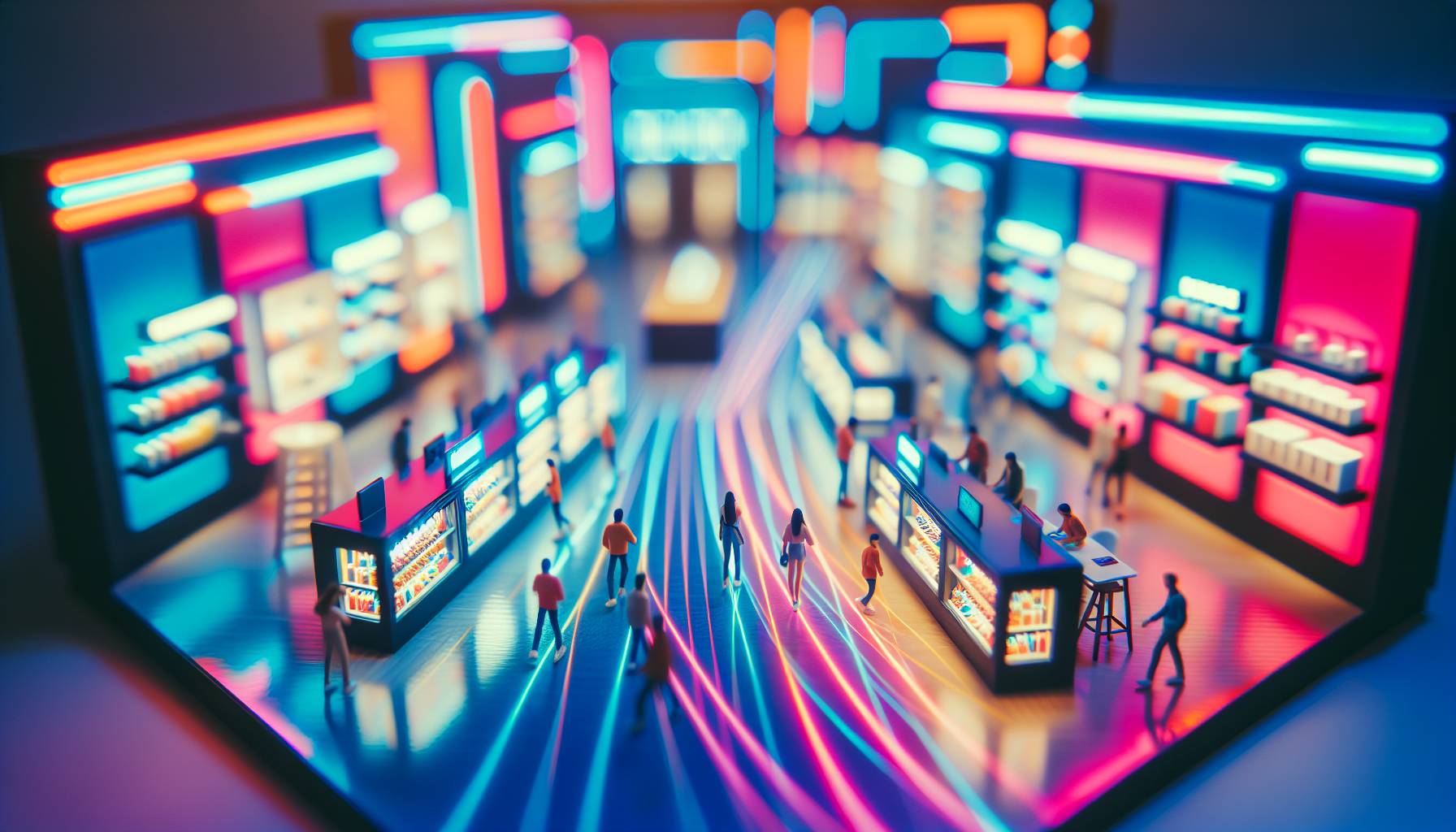Understanding Customer Psychology

Why do some people walk out of your store empty handed while others drop half their paycheque on stuff they don’t even need. I think it’s fairly safe to say there’s more to the shopping experience than cash and credit. More or less. If you’re serious about keeping your customers coming back for more, you have to figure out what really makes them tick.
There's plenty of talk about product and price, but in my experience, emotions matter much more. People who feel like their input is valued are likely to tell their friends and family about your store. This is known as the 'IKEA effect,' where positive feelings about your business can convert an indifferent window shopper into a die-hard fan.
It also means people are less likely to kick up a fuss if something goes wrong. And that’s almost always a good thing. More or less. Many retailers forget that most shoppers have an emotional response to what they're buying.
You could sell cars or cupcakes and the logic is pretty much the same. Shoppers feel a rush of positive emotion when a salesperson demonstrates genuine interest in helping them pick out the right product for them. But when things go badly - maybe staff are disinterested or rushed, perhaps there’s a long line at checkout - people associate negative emotions with your brand and will not be back again. A lot of these insights might seem obvious at first glance, but you’d be surprised how much time, effort, and money retailers put into product, price, and marketing when they could be doing the little things right on the shop floor.
That can almost never mean offering genuine advice or providing thoughtful feedback to customers who have an opinion on how things can improve around the place. Sometimes it comes down to simple things like greeting people as they enter the store or responding positively when someone leaves a review online.
Personalization Strategies That Work

Do you ever feel more seen in some stores than others. Sometimes it's not your imagination - they're doing it on purpose. And, for many of us, that's a fairly good thing. Personalisation isn't merely putting your name up there in lights.
Rather, it's a blend of art and science with the intent of making you feel like you're more than just a wallet with legs. Personalisation strategies have sort of changed the way the retail sector operates - especially when it comes to fashion. With all this talk about AI and data analytics, the kind of customisation that's available is on a whole other level these days. We've got virtual stylists who recommend certain items based on preference, we see customer profiles being built so specific suggestions can be made, and we see AI being used to help streamline the process further still.
The idea seems to be that for each customer that walks through their doors or scans through their website, they're creating an atmosphere where people feel valued as individuals - regardless of their age or gender or even shopping habits. There appears to be a greater desire for understanding things like sizing preferences (because not everybody is comfortable sharing that information), favourite colours/patterns (or even ones people avoid), and price points (because nobody likes sticker shock). For certain brands like Lululemon, Nike, or even smaller ones like Good Pair Days, individual information has proven invaluable when it comes to offering personal recommendations. Other brands that use similar technology and methods have found ways to learn about their customers' style preferences simply by observing what they put into their baskets online.
From there, they come up with tailored recommendations and build out entire shopping carts if need be. If you want something truly special to tie it all together, adding features such as simple monogramming or embroidery can add extra value on both ends of the transaction. People seem to love exclusivity too because limited-edition collaborations always fly off the shelves faster than most others.
Leveraging Technology for Enhanced Interaction

You ever notice how people seem more glued to their phones than ever. I don’t blame them - with the world of information, entertainment, and retail right at your fingertips, it’s almost impossible not to be. More or less.
But this isn’t necessarily a bad thing - if anything, it creates more opportunities for brands to reach consumers. The catch is that you need to be able to do so without being too intrusive. This is where technology can come in handy.
With the right platform, you can seamlessly integrate yourself into your customers’ lives by sharing information they care about in ways that suit their lifestyle. It’s all about making your customer’s journey more convenient, entertaining, and informative at all touch points with your brand.
It’s a good idea to set up an app that they can download so they’ll have everything they need all in one place. Within this app you could include QR codes that they can scan in-store for exclusive offers and rewards when scanned. You could also include options for a virtual or augmented reality experience with the products you offer.
Don’t worry, you don’t need a million dollar budget or design team to implement these ideas - there are plenty of online platforms offering affordable solutions. If an app isn’t feasible for your business at the moment, you could opt for a messaging platform instead. When used appropriately and with the permission of customers, these can provide real-time updates on products and services that are relevant to your customer’s interests.
You could use them to communicate important updates on special offers and order statuses.
Creating Memorable In-Store Experiences

What is reportedly it that draws us into a shop and keeps us there - other than the desire to get what we came in for. It's this sense of discovery, of delight and of excitement. Makes Me Think Of of touching, feeling, experiencing and yes, seeing people.
Retail, at least for me, is much about the experience as it is about shopping. Or perhaps that's because I'm rather particular about the things I buy - not just the 'things', but their entire journey from where they began to how I came to own them. With online shopping taking over most aspects of our lives, stores have had to get creative with their solutions.
And some of those solutions are rather delightful. Think immersive events with food and wine tastings or art installations or more community-based activities such as book readings or even mindfulness workshops with access to experts from different fields. And with these options, so many more retailers are choosing to also create spaces within their stores that truly align with their customer base's way of life. It's no longer about just selling or even up-selling products (which has its place too).
The newer experiential activations are designed to draw people in by providing them a chance to step into a store that feels like 'them'. By giving them access to things that might feel interesting - it's also a clever way for retailers to test and trial what new product lines might fit in well with existing offerings or which ones may need tweaking before being offered to customers. More or less. And because people's schedules appear busier than ever now, these little breaks from reality offer much needed respite and a break from the ordinary.
As someone who works long hours daily, I'd be far more likely to pop into a local store if they're having an event or featuring new products (with light snacks please) on weekends than if they're simply open and looking fairly ordinary on the inside.
The Power of Community Engagement

Do you feel like you belong anywhere, or to any group. There are few better feelings than walking into a place where people know you, greet you warmly and are glad to see you. It’s why restaurants use the ruse of asking if you’ve dined with them before - they want to show you off, and introduce you to everyone else. I suppose it’s that recognition, that familiarity and sense of shared identity that makes us feel like we matter.
And that’s what keeps people coming back - this pride in belonging to a tribe, especially one that makes us look good. The entire retail world is filled with these little micro-tribes of regulars and strangers - some groups large, others much more tight-knit. It seems odd to think about, but the power of community engagement is quite immense in winning repeat business and greater loyalty. Maybe it’s as simple as regulars getting exclusive access to new products or services first, or special benefits at events and gatherings.
Even their opinion matters more, so involving them in discussions around store expansion or growth only increases their sense of agency and influence over your brand. And sometimes, people form these communities themselves - rallying together in support for one thing or against another. It takes some finesse to participate without commandeering their initiative, but it’s very possible.
Rewarding customers for reviews or testimonials helps those who want to get involved but are unsure where they fit in. And everything from contests to workshops can bring together similar people who share something in common through your brand - all with your involvement at the centre.
Measuring and Analyzing Engagement Success

How do you know your store engagement strategy is working. I mean, unless everyone’s dancing on TikTok or tagging you in endless Instagram Stories, it’s hard to track. Appears To Be lucky for us, digital tools can now capture nearly every move people make, both online and in the physical space.
More or less. Social media engagement tools are pretty great at measuring things like how many times your brand has been mentioned, direct messages (DMs) sent, and interactions with posts. These numbers may not always tell the whole story, but they do offer a fair picture of what’s happening from a bird’s eye view - because let’s face it, being on social media is sort of a social mandate if you’re running any kind of retail shop.
Analysing online engagement is made way more powerful when combined with whatever is happening on your website. There are quite a few different apps out there that help measure where customers are spending time on your site and what they are clicking through to. Generally these apps also allow you to set up A/B testing models so you can compare how different changes to your homepage or product pages impact sales. In-store engagement probably seems harder to measure, but it can be fairly simple if you know what to look for - number of event sign-ups and attendees is an obvious one, followed closely by new followers and in-store purchases after in-person events.
It’s worth sitting down every quarter or so with your team and discussing which activities people responded positively towards the most - write this down so you have some kind of ongoing record of what worked well for your store. Over time, you’ll spot patterns that make deciding what to do next infinitely easier than having no data at all.


